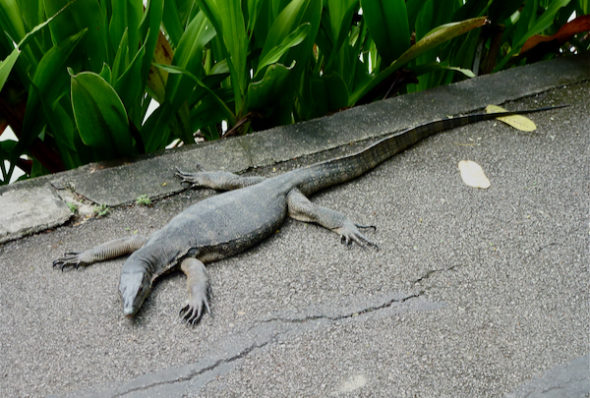
Singapore? In Harmony with Nature?
In 1990 I was invited to Kuala Lumpur to deliver a talk to the Malayan Nature Society audience. The title was “Singapore? In harmony with Nature?”. It was a hilarious talk. Singapore was teeming with nature, even in the urban areas. We had the Bukit Timah Nature Reserve and the Central Catchment Nature Reserve. The Sungei Buloh Wetland Reserve was in the making. Many man-made parks had been created among the tree-lined roads. It would appear that the population was soaking up the nature areas. However, the mostly urban population’s appreciation of nature was in many cases skin-deep.

NSS Normanton Park walk.
When the then Malayan Nature Society (Singapore Branch) organised nature walks, only a handful of members attended. When shown a flowering branch, many would utter “Can eat of not?” In encountering a plant with attractive flowers, it was common for people to pluck the branch, the better to admire it. Stalled cars are commonly seen left by the wayside with a colourful branch placed on it, in order to warn other cars. Some people even uprooted whole plants in order to plant it at home, even when told that is was vandalism.

Stalled car with colourful branch
And when shown an insect, there would those who utter “Can bite or not?” It would be futile to point out larger animals like a snake or a large lizard, as they would probably panic. But not all would panic. After all, many Chinese relish wildlife like squirrels, porcupine, pangolin, monitor lizard, even python. Many of these animals are eaten for their abilities to stimulate the sexual desires of the aged or the jaded appetites of the wealthy.

Malayan Water Monitor (Varanus salvator) – Can eat ah?
Ants are regularly exterminated with aerosol insecticides in the homes. But to suddenly squash a giant forest ant that does no harm along the forest road, the triumphantly announce her success is bizarre.

Giant forest ant (Camponotus gigas).
We even export such behaviour overseas. A report in The Straits Times of 26 February 1993 reported a Singaporean tourist at an aquarium in Monterey, California quipped when encountering stingrays: “Eh? Quite big can barbeque.”

The Straits Times of 26 February 1993… barbecue…
One unnamed organisation developed a nature trail on one of the out-laying islands and suggested spraying insecticide regularly in order to control ants is another absurd proposal. The most absurd suggestion was from a government agency to remove all the Nepenthes plants along a specific walk because the pitchers “breed” mosquitoes. For your information these pitchers trap insects, including mosquitoes and slowly digest them.
Pitcher plant (Nepenthes gracilis).
However, 30 years later things are different. We are indeed in harmony with nature!
Wee Yeow Chin
14th February 2023








